Pistol Hino-Kamuro (Hino-Komuro)
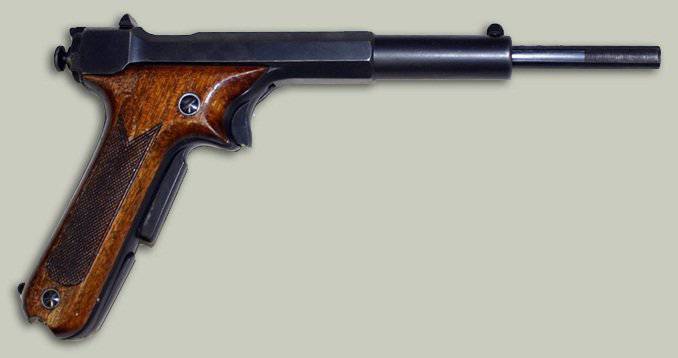
Japanese pistols are quite interesting in terms of design and appearance, and very often they do not resemble the typical features of a European short-barreled gun. weapons. The Hino Komuro pistol is no exception.
Weapons developed in 1904 year, the lieutenant of the Japanese army Kumaso Hino (Kumazo Hino). Financed the project Tomishiro Komuro (Tomijiro Komuro) at the factory which was launched production. Because of this, the gun got its name Hino-Komuro.
The Hino Komuro pistol had characteristics that distinguish it externally from most self-loading pistols. Hino-Kamuro lacked the usual trigger guard, the handle cheeks had a protrusion in the front upper part and closed the frame right up to the trigger. The end of the barrel with a notch on the surface a few centimeters protruded from the base of the frame.
The first patent for their gun Kumazo Hino (Kumazo Hino) and Tomishiro Komuro (Tomijiro Komuro) received 23 September 1904 of the year, followed by 7 February 1908 of the year. The US patent number 886211 was obtained on April 28 of the year 1908. Very often, the title of the gun make a postscript, which indicates that this is the model 1908 of the year - Hino Komuro M1908.
In the gun Hino-Kamuro used very rarely used principle of operation. Automatic pistol uses the energy of the bullet, which during the shot crashes into the grooves of the barrel and carries the moving barrel forward. Recoil energy in this scheme is not used at all. A similar principle of operation of the automation was applied a little earlier in the Steyr-Mannlicher M1894 pistol.
The frame of the gun consisted of a handle, cylindrical and octagonal upper parts and the back of a rectangular cross section.
For cocking a gun, Hino-Kamuro needed to pull the moving barrel forward. In the cocked pistol, the protruding portion of the barrel protruding from the base of the frame is significantly longer than that of the non cocked pistol.
Under the trigger is an automatic safety device that blocks the trigger on the cocked weapon.
Schematically, the device of the Hino-Kamuro pistol (Hino Komuro) is as follows (on the left in the diagram shows the pistol in disassembled form, on the right - the assembled weapon). The gun is fairly simple in design and quite technologically advanced in terms of manufacturing.
The Hino-Kamuro pistol (Hino Komuro) at the bottom of the handle on the front surface had an extended magazine release lever. On the back of the handle was a hole for attaching the pistol strap ring.
Schemes of the patent clearly demonstrate the work of the parts and mechanisms of the pistol at the time of cocking and firing.
At the moment of cocking, when the shooter was pushing to the extreme forward position of the barrel, the cartridge was captured by a special feeder and brought in line with the axis of the barrel bore. After the shooter released the barrel, he moved in the opposite direction under the action of the return spring, while the cartridge was sent to the chamber, and the barrel stood on a combat platoon.
To fire a shot, it was necessary to first press the safety lever to unlock the trigger, and then the trigger itself. In this case, the sear went down, and the barrel fell from the platoon.
Under the action of a reciprocating spring, the barrel with a cartridge in the chamber rushed to the extreme rear position and the cartridge primer nakalivaet on the stationary drummer rigidly fixed in the frame - a shot occurred. After the shot, under the action of the energy of the bullet, which crashed into the grooves of the barrel bore, the barrel rushed forward, the sleeve was removed upwards through the window in the frame, and another cartridge was sent. The disengagement occurred due to the rear protrusion of the trunk, which, when moving forward, affected the rear protrusion of the trigger.
Hino Komuro pistol sights (Hino Komuro) consisted of rounded front and rear sight mounted on the top of the frame.
Hino-Kamuro was produced in several calibers: 6,35 Browning, 7,65 mm Browning, 8 mm Nambu, and even used 5 mm cartridges. The gun, chambered for the 7,65 Browning, had a magazine capacity of 8 cartridges, a total length of 256 mm, a barrel length of 202 mm, a mass without 820 cartridges gram.
A diamond-shaped notch rounded at the bottom and pointed at the top was applied to the cheeks of the Hino Komuro pistol grip.
Hino-Kamuro Pistol Store was very similar to the P-08 Parabellum pistol store, thanks to the cylindrical bottom. The difference was the recess for the retainer, located at the bottom of the front of the store.
The lower part of the Hino Komuro handle had a hollow under the cylindrical base of the magazine, as well as the P-08 Parabellum. Probably this notch was on one of the variants of the pistol, perhaps on the pistols of a later release. The cheeks of the handle of these guns are secured with two screws.
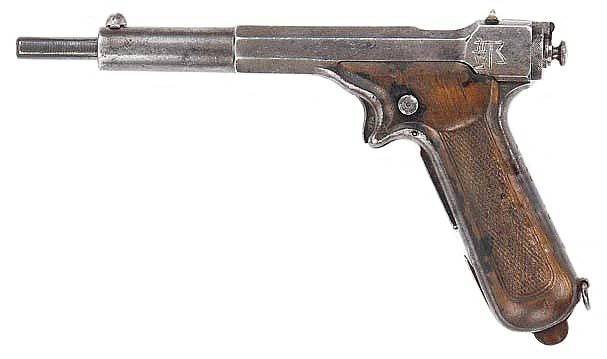
On the schemes of the patent and on some other pistols there are no recesses in the lower part of the handle under the cylindrical part of the magazine. The cheeks of the handle of these pistols are fixed with just one screw located at the trigger. In addition, the shape of the upper part of the notch on the surface of the cheeks of the handle is not pointed, but almost rectangular.
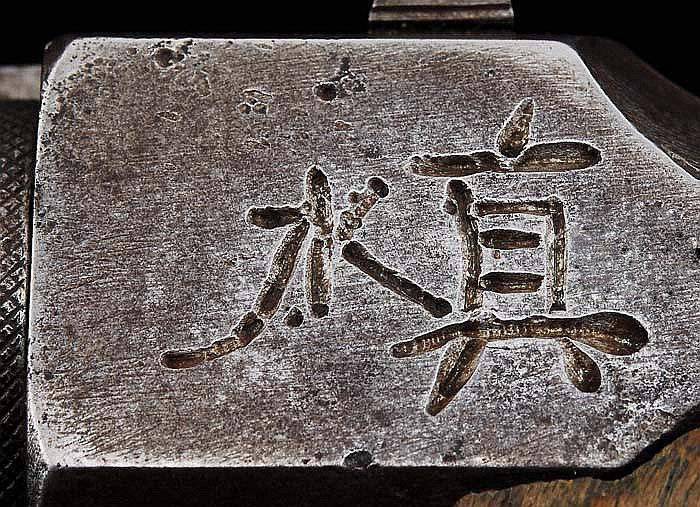
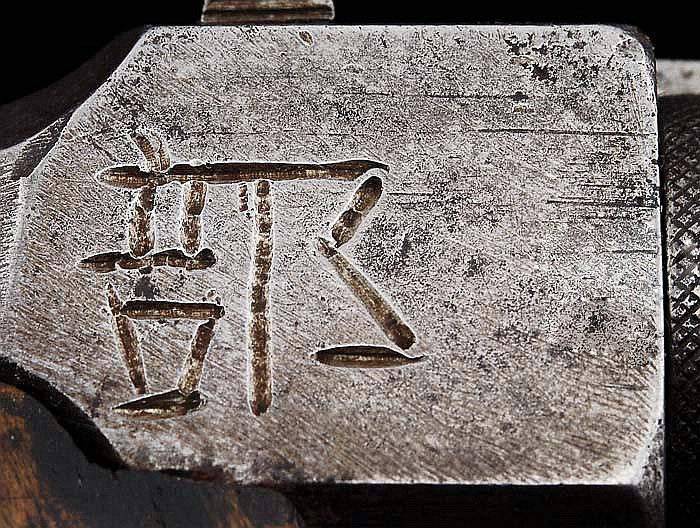
On the side surfaces of the frame of the pistol, exhibited at one gun auction, are hieroglyphs, the meaning of which suggests that they planned to use weapons in the naval forces.
Kumazo Hino (Kumazo Hino) and Tomishiro Komuro (Tomijiro Komuro) hoped to develop a pistol for the Japanese army and get a military order, but as often happens, fate decreed otherwise. The gun did not suit the military, who considered this weapon insufficiently reliable from the point of view of security. The advantage of a pistol was a long barrel, which, thanks to an unusual layout, slightly increased the total length of the weapon. Thanks to this, the target range was very decent.
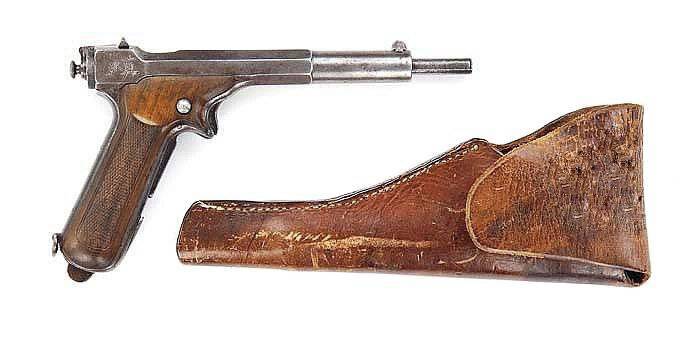
The absence of the trigger guard, the unreliable operation of the fuse, the location of the magazine retainer lever on the front side of the handle, significant recoil when fired, all these flaws in the gun caused the lack of commercial success of the Hino Komuro pistol. In 1912, the release of pistols was discontinued.
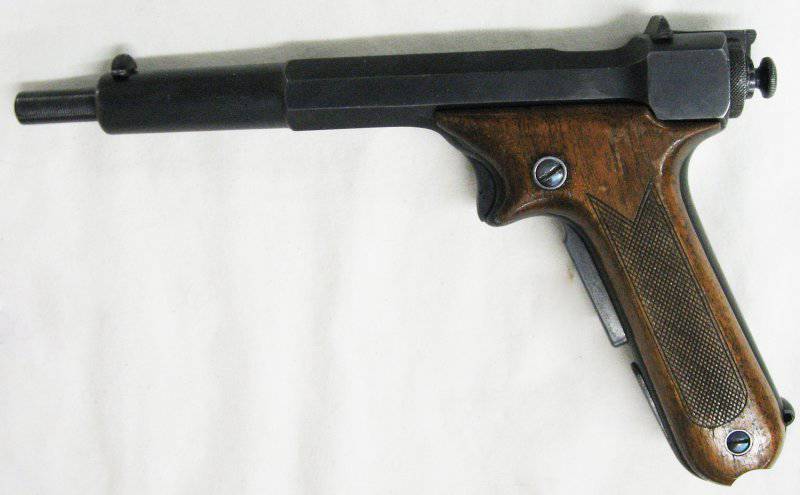
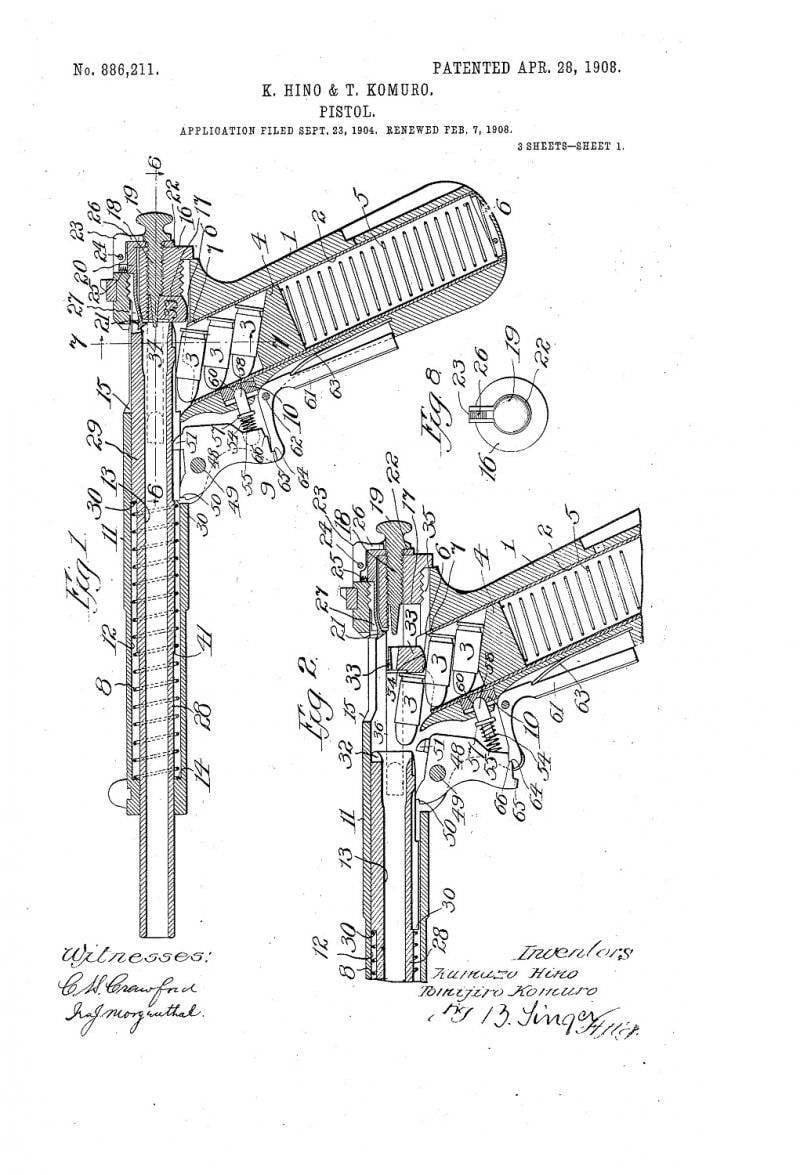
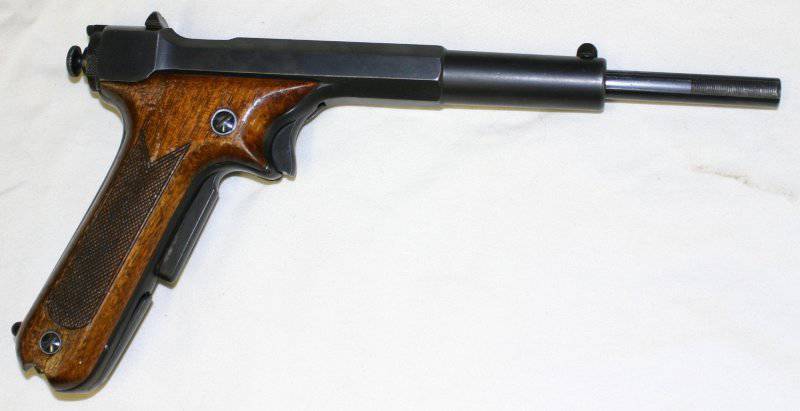
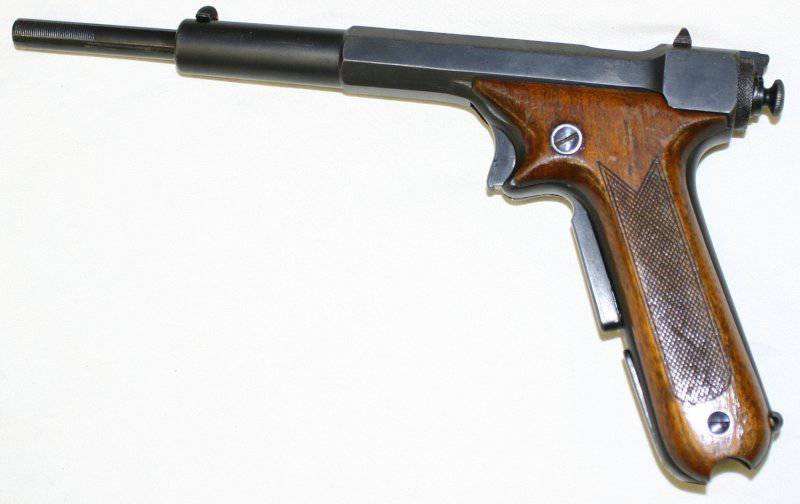
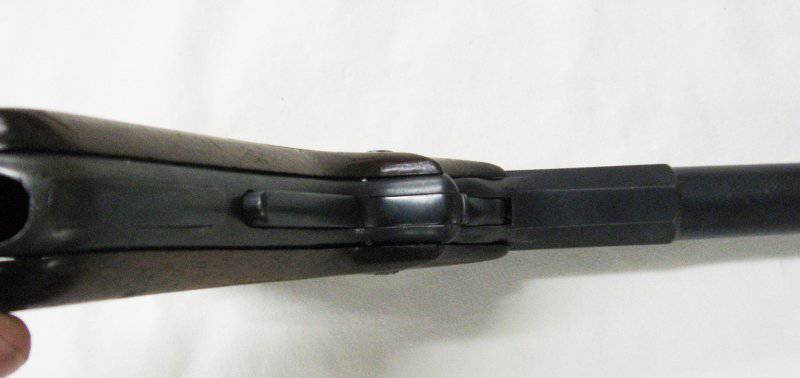
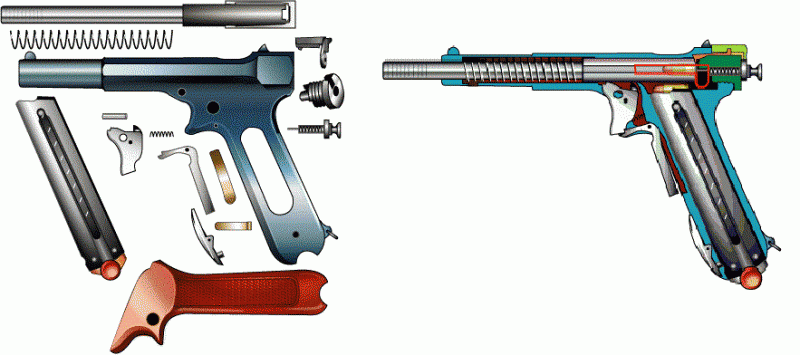
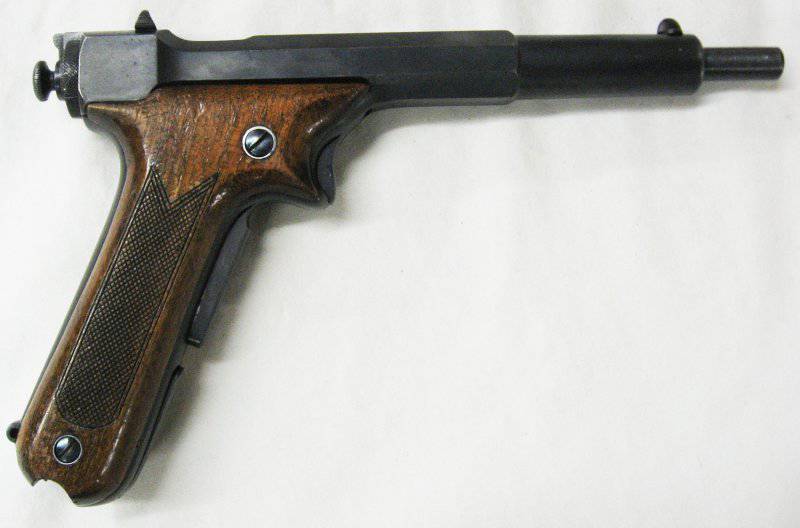
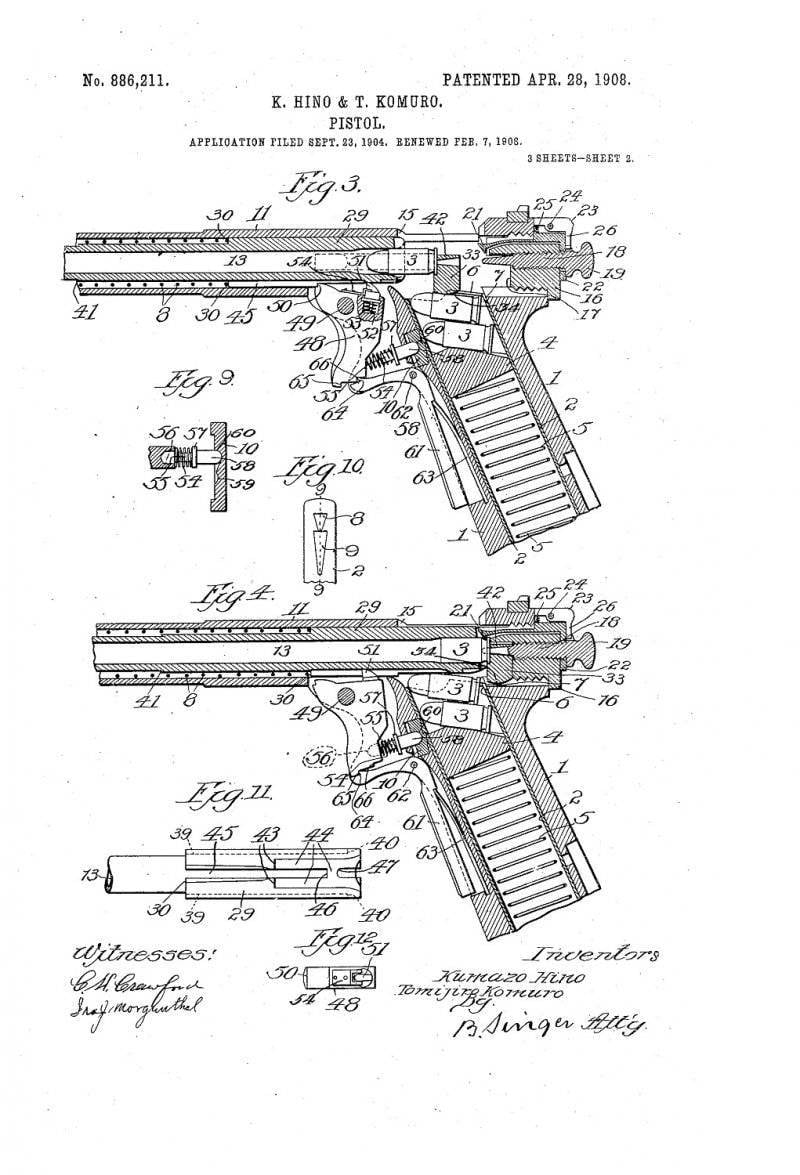
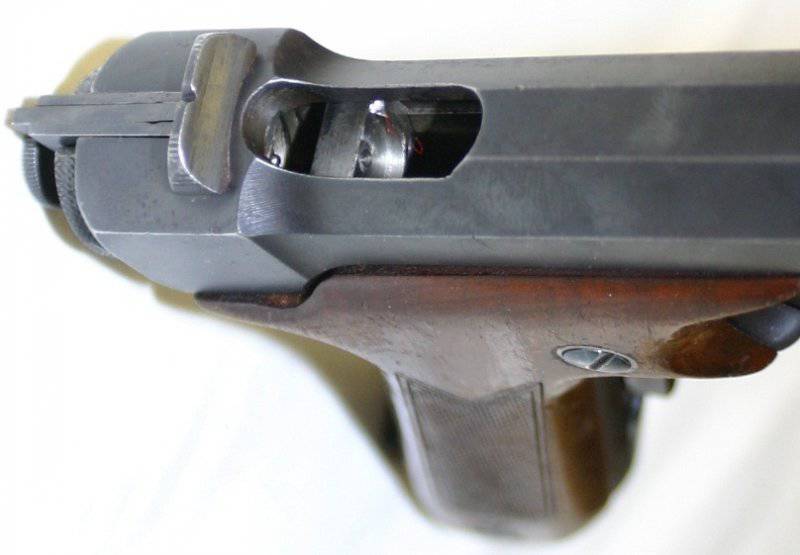
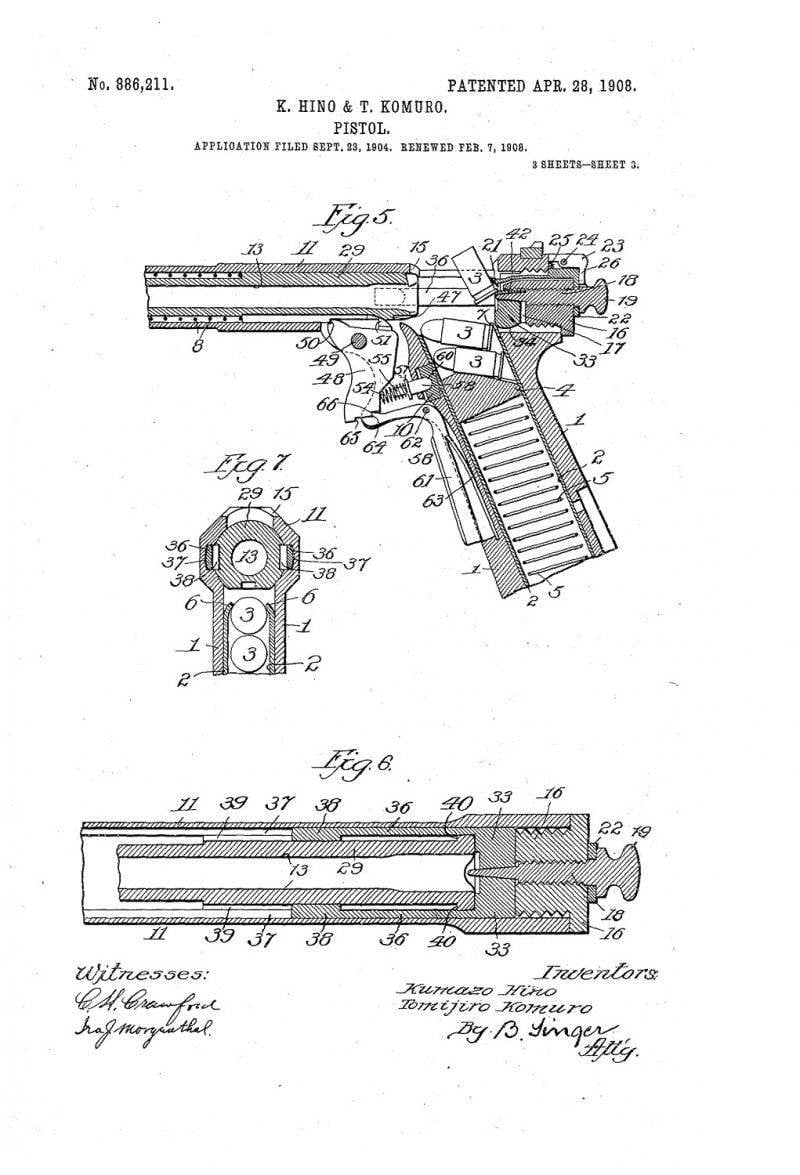
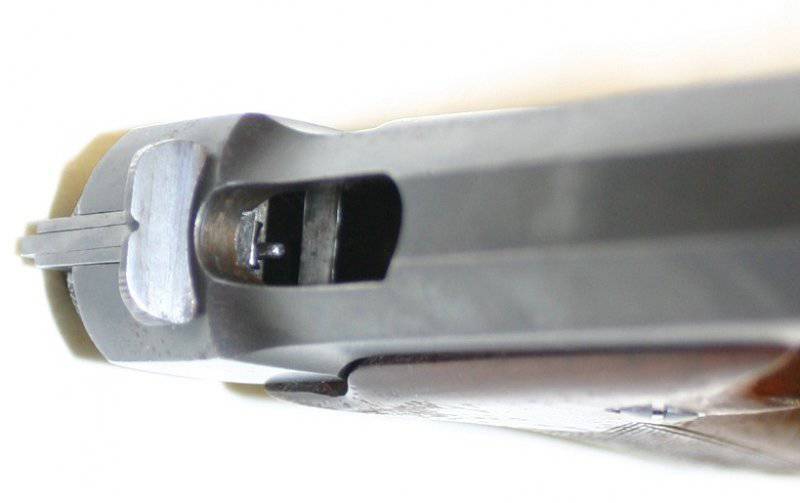
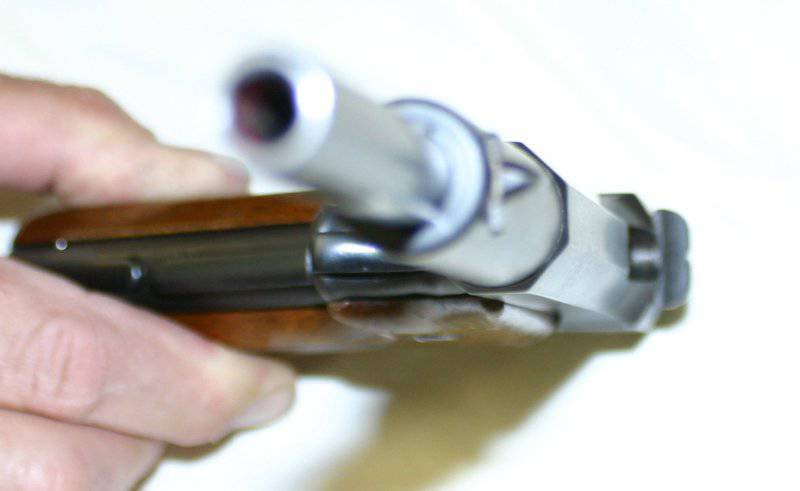
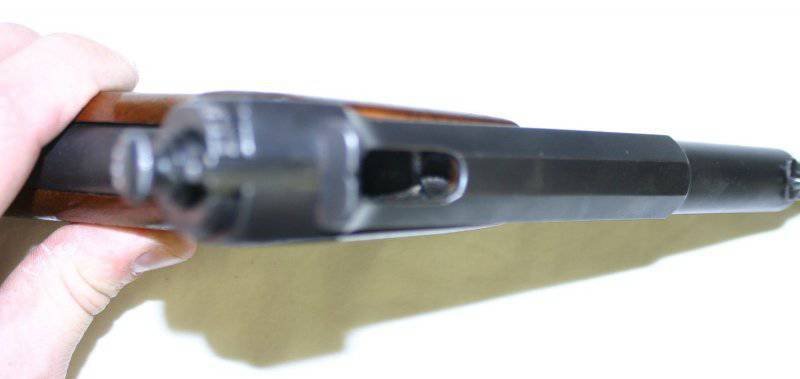
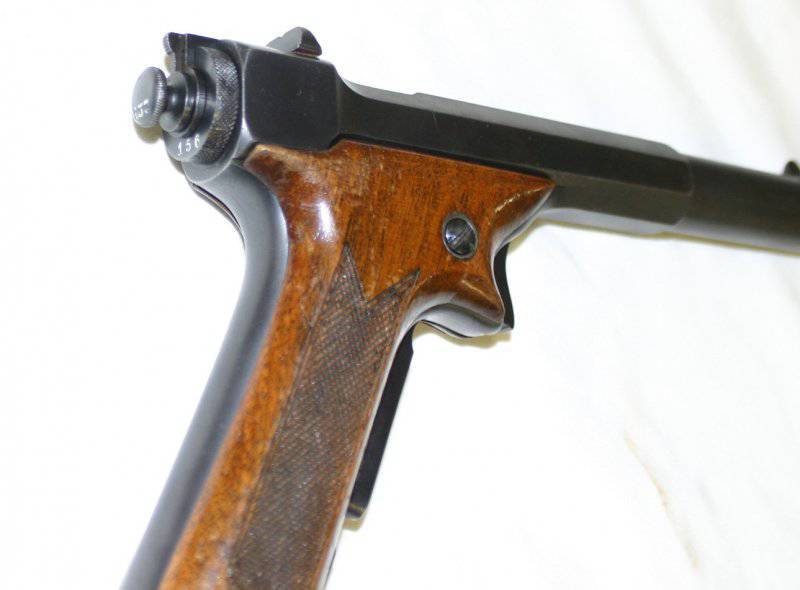
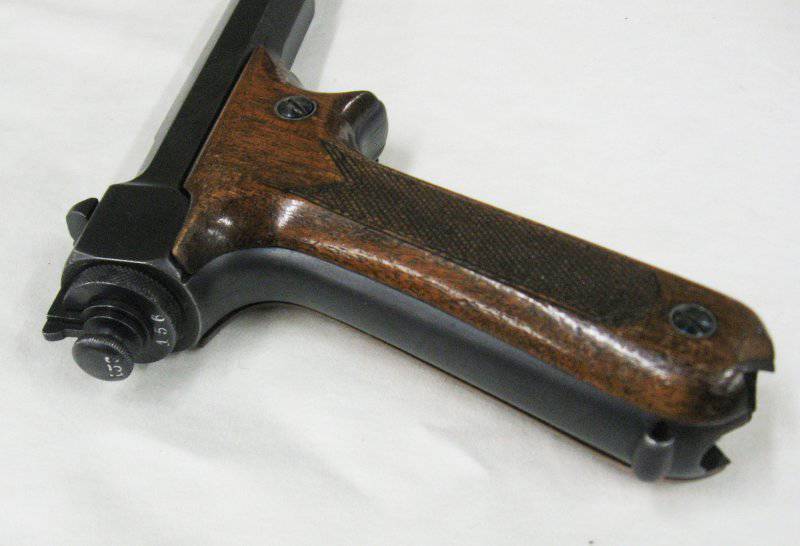
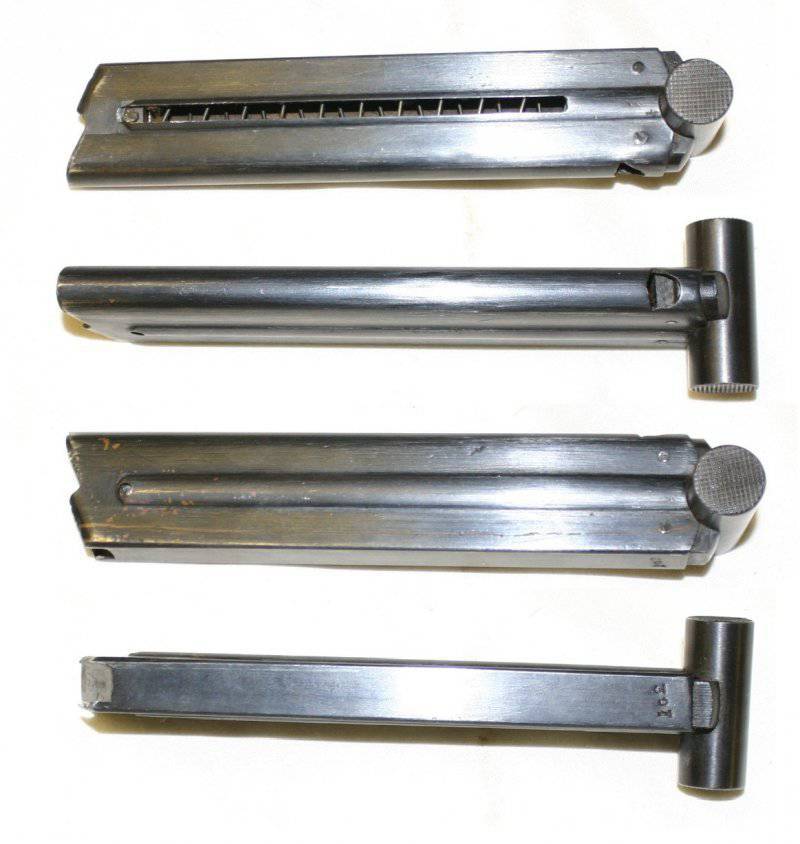
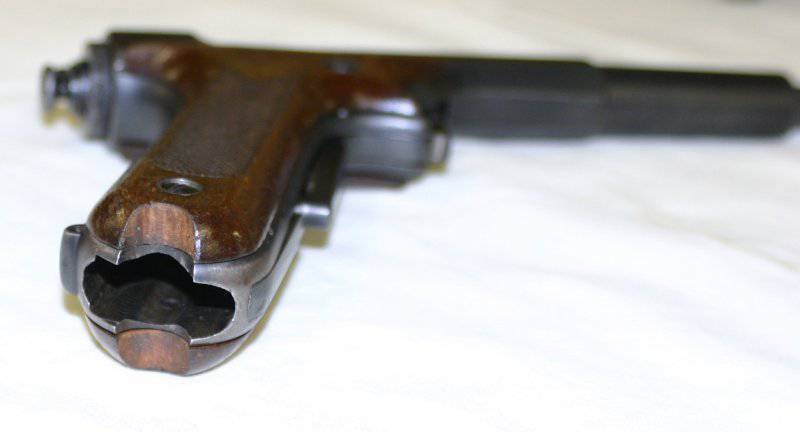
Information